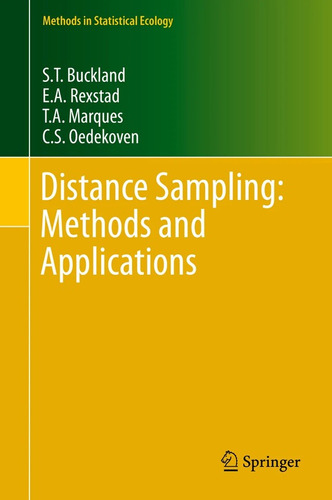Distance Sampling: Methods And Applications - Bucland
en 12x sin interés
Llega mañana sábado
Solo en Santiago de Chile
Comprando dentro de la próxima 1 h 49 min
Beneficio Mercado Puntos
Retira a partir del lunes en servicios de encomiendas y otros puntos
Comprando dentro de la próxima 1 h 49 min
Beneficio Mercado Puntos
Ver en el mapa¡Última disponible!
Conoce la


Características principales
Título del libro | Distance Sampling: Methods and Applications |
|---|---|
Autor | Bucland,S.T. |
Idioma | Inglés |
Editorial del libro | Springer Nature |
Edición del libro | 0.0 |
Tapa del libro | Blanda |
Con índice | Sí |
Año de publicación | 2015 |
Otras características
Cantidad de páginas: 280
Altura: 23 cm
Ancho: 15.5 cm
Peso: 500 g
Con páginas para colorear: No
Con realidad aumentada: No
Género del libro: Ciencias y Naturaleza
Tipo de narración: Manual
Tamaño del libro: Mediano
Accesorios incluidos: No
Edad mínima recomendada: 18 años
Edad máxima recomendada: 99 años
Escrito en imprenta mayúscula: No
Cantidad de libros por set: 1
ISBN: 9783319371962
Descripción
LIBRERÍA LEA+
In this book, the authors cover the basic methods and advances within distance sampling that are most valuable to practitioners and in ecology more broadly. This is the fourth book dedicated to distance sampling. In the decade since the last book published, there have been a number of new developments. The intervening years have also shown which advances are of most use. This self-contained book covers topics from the previous publications, while also including recent developments in method, software and application.
Distance sampling refers to a suite of methods, including line and point transect sampling, in which animal density or abundance is estimated from a sample of distances to detected individuals. The book illustrates these methods through case studies; data sets and computer code are supplied to readers through the book's accompanying website. Some of the case studies use the software Distance, while others use R code. The book is in three parts. The first part addresses basic methods, the design of surveys, distance sampling experiments, field methods and data issues. The second part develops a range of modelling approaches for distance sampling data. The third part describes variations in the basic method; discusses special issues that arise when sampling different taxa (songbirds, seabirds, cetaceans, primates, ungulates, butterflies, and plants); considers advances to deal with failures of the key assumptions; and provides a check-list for those conducting surveys.
----------
¡Cuéntanos si necesitas más libros y podemos publicar un PACK A TU MEDIDA, para que AHORRES en gastos de envío! Necesitamos saber el título y autor para ver disponibilidad.
